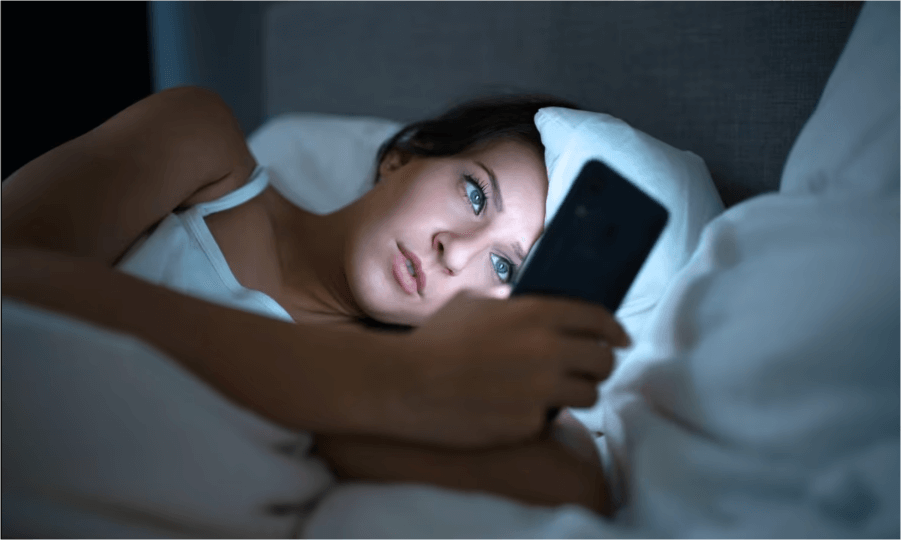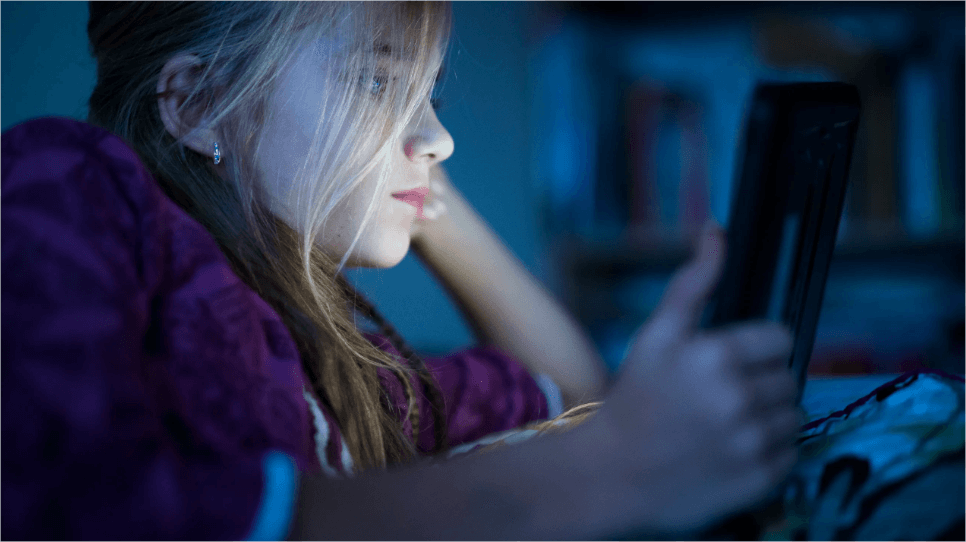📑Table of Contents:

Screens have become a constant in modern life. Since the COVID-19 pandemic, phones, laptops, and TVs have played a bigger role in how we work, learn, and relax. Although lockdowns are long over, screen use remains high. Apple’s weekly screen time notification is a regular reminder for many of us about just how much time we spend looking at our devices.
But how much screen time is too much? And are we still glued to screens as much as we were during the pandemic? Let’s take a deep dive into the latest statistics for 2025 and see how habits differ across ages, devices, and platforms.
Average Screen Time by Age
Screens are part of everyday life for children and teens. The recommended daily screen time for kids ages 6–17 is about two hours. For adults, outside of work, the safe range is between two and four hours. The reality is very different.
- 40% of children regularly use a digital tablet by age two.
- 25% of children own a personal cellphone by age eight.
- Gaming among kids ages 8 and under has increased by 65% over the last four years.
- Kids and teens ages 8–18 spend an average of 7.5 hours a day in front of screens just for entertainment. That equals 114 days per year.
- Children ages 0–8 average 2.5 hours daily, while ages 8–10 average 6 hours.
- Ages 11–14 spend about 9 hours a day on screens.
- Ages 15–18 average 7.5 hours daily.
These numbers show a clear gap between recommended use and reality. Despite health warnings, screen habits continue to rise among children.
Average Screen Time for Young Adults
Young adults spend some of the highest amounts of time online. Gen Z, born after 1996, leads the way.
- Gen Z watches 7.2 hours of video daily across TikTok, YouTube, and Netflix.
- Phone usage is up by 60–80% compared to pre-pandemic levels.
- Millennials average 205 minutes per day on screens.
- Gen X averages 169 minutes, while Boomers average 136 minutes.
- 42% of Millennials admit they haven’t gone more than five hours without checking social media.
- Younger Millennials check their phones around 150 times per day, nearly triple the overall average of 58.
- Over 50% of Millennials wake up during the night to check their phones.
Clearly, younger generations are heavily dependent on digital devices, while older generations show more restraint.
Generational Differences in Screen Habits
Each generation uses screens differently.
- Boomers focus on online searches and banking.
- Gen X splits time between social media and searching.
- Millennials lean toward social media and streaming.
- Gen Z spends most time on user-generated content and video games.
Awareness of excessive use also varies:
- 76% of Gen Z say they spend too much time on screens.
- 67% of Millennials agree.
- 66% of Gen Xers share the same concern.
- Only 51% of Boomers admit the same.
Even though Gen Z spends the most time on screens, they’re also the most self-aware about the potential harm.
Pandemic Effects on Screen Time

COVID-19 changed digital habits in a way that still lingers.
- U.S. kids now use devices twice as much as pre-pandemic.
- At the height of COVID, 62% of parents reported their kids were on screens more than 4 hours a day.
- During lockdowns, 83% of teens used texting to stay connected, while 72% used calls, and 37% used email.
- Internet use jumped by 50–70%.
This surge in usage had lasting health effects. More screen time was linked to higher rates of anxiety, depression, poor sleep, and even physical pain like headaches and neck strain.
Average Time Spent on Social Media Apps
Social media continues to dominate daily habits.
- In 2024, people spent an average of 143 minutes a day on social media.
- TikTok: 67 minutes daily
- YouTube: 55 minutes
- Facebook: 39 minutes
- Instagram: 31 minutes
- Twitter/X: 9 minutes
- Snapchat: 7 minutes
TikTok leads the pack, especially among younger users, while YouTube remains a universal favorite.
Average Time Spent on Streaming Services
Streaming platforms are another major driver of screen time.
- The average person streams 3 hours of content daily.
- 95% of people hold accounts on at least two streaming platforms.
- Disney+’s Bluey was the most streamed show in 2024, with 55.6 billion minutes watched.
- Netflix’s Bridgerton was the most-watched original, with 21 billion minutes streamed.
- Moana was the most streamed movie, with 13 billion minutes on Disney+.
Viewer preference data shows Netflix still leads in user experience at 36%, followed by Amazon Prime Video at 14%.
Signs of Excessive Screen Time
Not all screen use is bad. But overuse has consequences. Watch for these warning signs:
- Poor sleep: Blue light suppresses melatonin and makes it harder to fall asleep.
- Vision strain: Long screen sessions cause headaches, dryness, and even long-term damage like myopia.
- Chronic pain: Neck and back pain often result from poor posture during screen use.
- Weight gain: Sedentary habits linked to screens increase risks of obesity and related health conditions.
- Mental health struggles: Long-term social media and gaming use are linked to anxiety, depression, and low focus.
Taking regular breaks, practicing the 20-20-20 rule (every 20 minutes, look at something 20 feet away for 20 seconds), and setting time limits can reduce harm.

Final Thoughts
Screen time continues to climb in 2025, even as life has normalized post-pandemic. Children, teens, and young adults spend more hours in front of screens than ever before, with social media, gaming, and streaming leading the way.
While screens help us stay connected, entertained, and informed, too much use can harm sleep, vision, posture, and mental health. Awareness is growing, especially among younger users, but habits are hard to break.
If you notice signs of excessive use in yourself or your family, small adjustments can help. Schedule offline time, prioritize face-to-face interactions, and limit device use before bedtime. Balanced screen use ensures you get the benefits of digital life without the harmful side effects.
